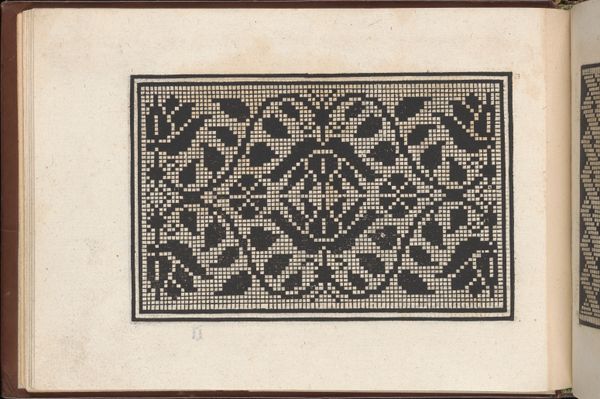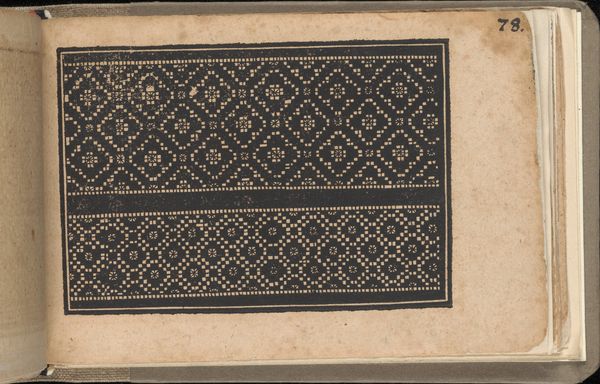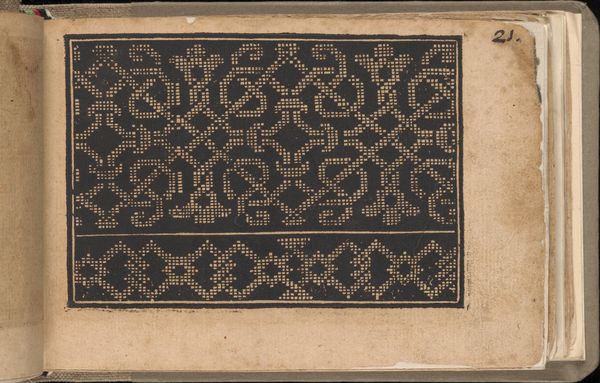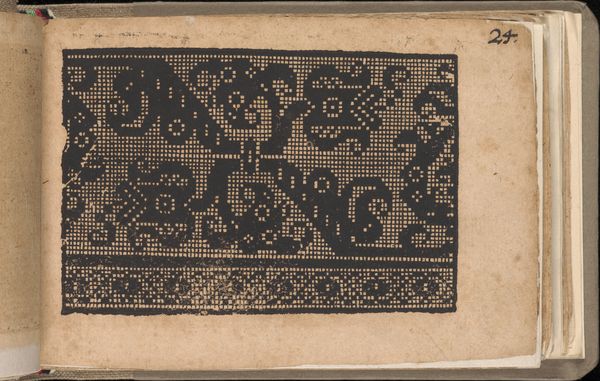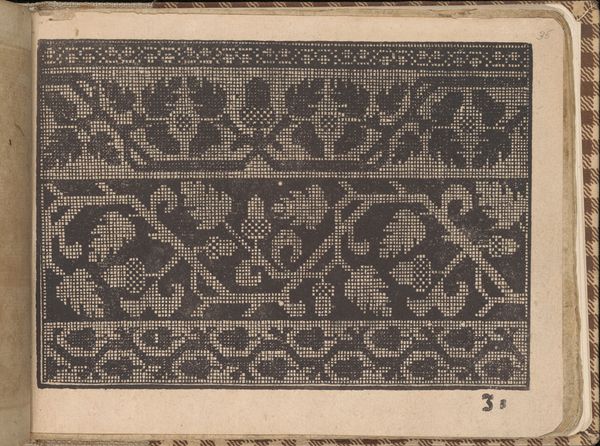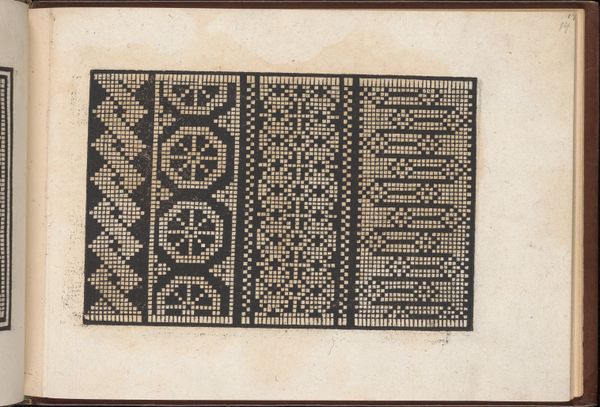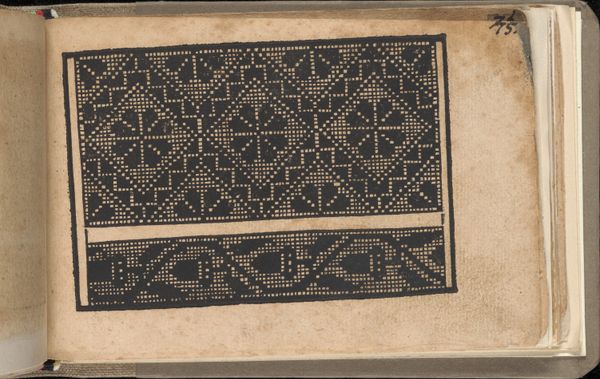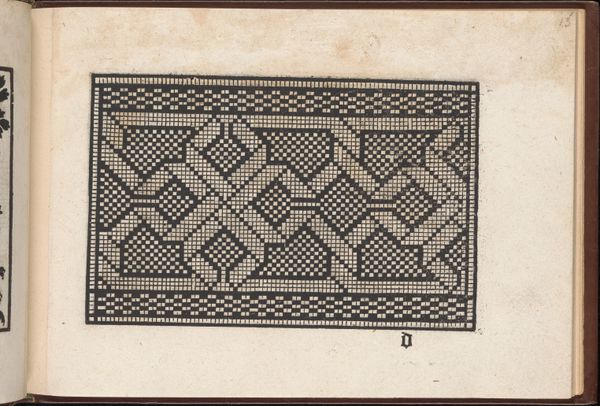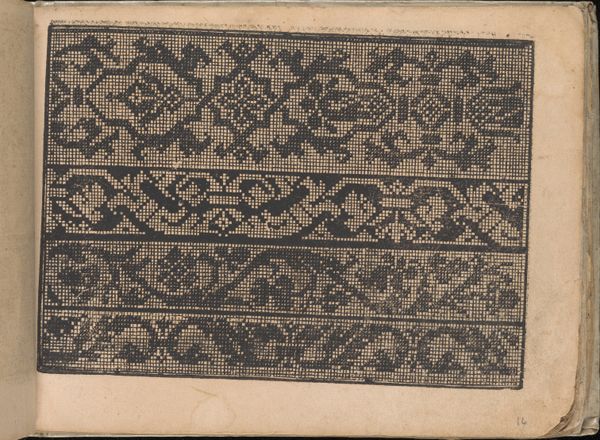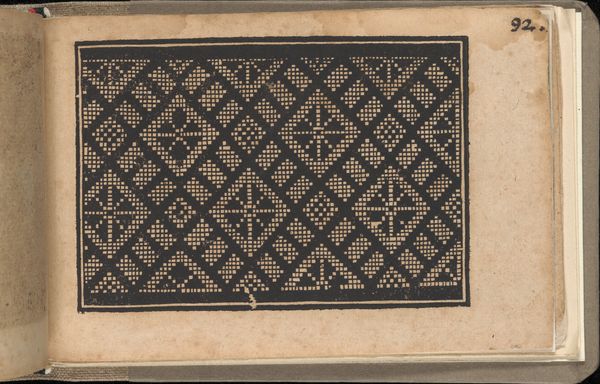
Page from Eyn Newe kunstlich moetdelboech alle kunst (Page 16v) 1532
0:00
0:00
drawing, graphic-art, print, woodcut
#
drawing
#
graphic-art
# print
#
11_renaissance
#
geometric
#
woodcut
#
northern-renaissance
Dimensions: Overall: 5 11/16 x 8 1/16 in. (14.5 x 20.5 cm)
Copyright: Public Domain
Curator: Immediately, the geometry strikes me. Stark black and white, a rigid grid that somehow suggests… lace? Editor: Indeed! What you’re seeing is a page from Peter Quentel's *Eyn Newe kunstlich moetdelboech alle kunst*, from 1532, a German Renaissance woodcut pattern book currently held at the Metropolitan Museum. Curator: So, it’s a catalogue? Were these like, the original clip art for embroiderers? Editor: Precisely. The Renaissance saw a burgeoning market for pattern books catering to various crafts, embroidery being prominent among them. Quentel's book provided a range of designs suitable for textiles. These served as visual guides for creating elaborate decorative elements for clothing and other household textiles, effectively democratizing design in a pre-internet age. Curator: That's fascinating – to think of how this humble grid births luxurious ornamentation. The square motif feels so contained, so deliberate... but its repetition becomes hypnotic. Does it echo other cultural symbols or weaving traditions, maybe carry embedded coded messages? Editor: In this period geometric patterns largely served aesthetic purposes without overtly symbolic narratives like in older traditions, or religious meanings that one might expect. The rigid geometric structure mirrors broader social shifts of the time, reflecting a rising order and emerging standardized forms during urbanization. Curator: So its abstraction becomes its meaning, mirroring a changing world, codified into each cross-stitch. Still, each little square holds a universe of potential… each motif carries memory. Editor: Exactly! The social impact of pattern books extended beyond artistic expression, facilitating economic production. Now, when we observe textiles embellished with geometric motifs, it prompts us to ponder cultural transmission and class distinctions within artistic representation. Curator: Well, I can’t look at a tablecloth the same way again! Editor: Nor I, without thinking of cultural legacies carried stitch by stitch, print by print.
Comments
No comments
Be the first to comment and join the conversation on the ultimate creative platform.
